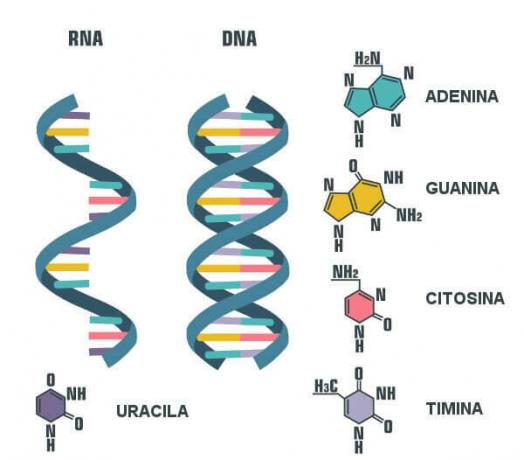Cartilage or cartilaginous tissue is a type of connective tissue of rigid consistency, but flexible and elastic.
This type of tissue has no blood vessels, lymph vessels, or nerves. Therefore, it is considered an avascular tissue.
Cartilaginous tissue is whitish or gray in color. It is found in various parts of the human body, such as: nose, trachea, larynx, ears, elbows, knees, ankles, among others.
Because cartilage is an avascular tissue, the nutrition of cartilaginous cells is carried out through the blood vessels of the adjacent connective tissue, the perichondrium, through diffusion.
For this reason, the cartilaginous tissue has a slow healing and regeneration capacity.
Roles
The main functions of cartilages are:
- Coating of bone joints;
- Damping impacts and friction between bones;
- Assistance in body movements;
- Support and protection for some parts of the body.
The presence of cartilaginous tissue in the joints responsible for supporting weights is fundamental, since this tissue accepts a large amount of load. This situation occurs in the hips, knees and ankles.
The cartilaginous tissue is predominant in the skeletal system of the embryo. It serves as a mold for the forming bones. During the embryonic development process, it is replaced.
Learn more about Human Body Joints.
Features
The cartilage connective tissue is made up of elastic protein fibers and collagen. About 60% is made up of collagen.
Its extracellular matrix is abundant and rich in proteins associated with a carbohydrate (glycosaminoglycans), which gives the tissue a firm and flexible consistency. Cartilaginous cells are immersed in the matrix.
O perichondrium (peri, around and chondros, cartilage) is the connective tissue that surrounds the cartilage.
Because it has blood vessels, the perichondrium also helps in obtaining and absorbing the nutrients brought in by the blood. They are received by the matrix and distributed among the cartilage cells.
Learn more about Connective tissue.
Cartilaginous Tissue Cells
Cartilage is formed from mesenchymal (undifferentiated) cells, which give rise to young cells, the chondroblasts. They then grow and transform into mature cells, chondrocytes.
Therefore, there are two types of cells that make up the cartilage tissue:
- Chondrocytes: rounded adult cells (chondros, cartilage and cytos, cells) that are located within gaps in the matrix. This region is an amorphous substance with few fibers.
- Chondroblasts: young cartilage cells (chondros, cartilage and blasts, young cell). They are responsible for the production of the intercellular substance, which provides resistance to the cartilage tissue.
Types of Cartilage
Cartilages are classified according to the texture and amount of fibers present. They have three types:
- Hyaline Cartilage: It is formed by type II collagen fibers, being the most abundant bone lining cartilage in the human body. It is very resistant and found in the trachea, larynx and nasal septum.
- Fibrous Cartilage: Also called fibrocartilage, it has a large amount of collagen I and does not have a perichondrium. It is found in the mandible, spine (between the vertebrae in the intervertebral discs), meniscus (knee) and the pubic joint.
- Elastic Cartilage: Light and flexible cartilage that has a large amount of elastic fibers (elastin) and a low amount of collagen. It is found in the ears, epiglottis and larynx.
 Characteristics of cartilage types
Characteristics of cartilage types
To learn more, read also:
- Histology
- Human Body Tissues
- Bones of the Human Body
Cartilage-related diseases
Many diseases are associated with cartilage wear. Examples are arthrosis, osteoarthritis and osteoarthritis. The latter is the most common rheumatic disease, caused by damage to the articular cartilage, which changes its thickness.
Note that since cartilage has no nerves, it does not cause pain. This factor provides the advancement of several diseases related to the cartilage tissue, such as: disease of Bessel-Hagem, which consists of abnormal cartilage development, rheumatoid arthritis, among others.
See too: Exercises on the Skeletal System


